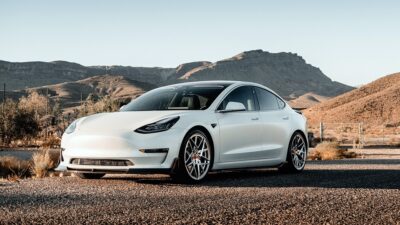The journey of electric vehicles (EVs) from mere concepts to mainstream objects on our roads is a remarkable tale of innovation, perseverance, and changing consumer values. As we transition into a more environmentally conscious era, the design of electric vehicles has undergone significant transformation, driven by advances in technology, sustainability, and consumer demand.
The Early Concepts: Visionaries and Innovators
The history of electric vehicles dates back to the 19th century, where innovative minds like Thomas Parker and Gustave Trouvé laid the groundwork. Early designs often revolved around practicality and basic functionality rather than aesthetics. The designs were rudimentary, focusing primarily on the mechanics of electric propulsion and battery efficiency rather than on user experience or style.
For decades, EVs remained on the fringes, overshadowed by their gasoline-powered counterparts. However, the introduction of the General Motors EV1 in the 1990s marked a significant turning point in the perception of electric vehicles. This sleek, futuristic vehicle showcased that EVs could be both functional and desirable, planting the seeds of change in consumer minds.
The Technological Revolution
The early 21st century brought about a technological revolution that redefined the possibilities for electric vehicle design. Lithium-ion batteries emerged as a game changer, offering higher energy densities and faster charging times. This revolution allowed designers to think beyond traditional confines, leading to innovative shapes optimized for aerodynamics and range.
Tesla’s Roadster, launched in 2008, was a watershed moment. With its sporty design and impressive performance, it shattered the stereotype that electric vehicles were slow and unattractive. The Roadster not only showcased the potential of electric technology but also instigated a shift towards electric vehicles as lifestyle choices rather than mere alternatives to gas-powered cars.
The Rise of Aesthetic Design
As electric vehicles gained traction, manufacturers began to regard aesthetics as crucial to their appeal. The focus shifted from merely functional designs to creating emotionally appealing vehicles that resonated with consumers. Car companies began to see electric vehicles not just as alternative fuel options, but as fashion statements and expressions of personal values.
This shift is evident in modern models like the Tesla Model S, which exudes sophistication and luxury while incorporating cutting-edge technology. Traditional automotive companies, recognizing this trend, redesigned their approaches. The Ford Mustang Mach-E and Volkswagen ID.4 are stellar examples of classic performance models reimagined through the lens of sustainability, combining heritage with modern design principles.
Sustainability and Material Innovation
Designing electric vehicles is not only about aesthetics; it’s also increasingly about sustainability. Manufacturers are continually seeking environmentally friendly materials to use in production. Advanced composites, recycled materials, and bioplastics are now being integrated into vehicle designs, minimizing ecological footprints.
The Mercedes-Benz EQ series, for example, employs sustainable materials in its interiors, showcasing a commitment to responsible design. This adherence to sustainability aligns products with the values of increasingly eco-conscious consumers, leading to a new design ethos that marries luxury with environmental responsibility.
The Future of Electric Vehicle Design
As we look to the future, the evolution of electric vehicle design is set to accelerate. With the advent of smart technology, such as AI integration and autonomous driving capabilities, the design process is undergoing a paradigm shift. Vehicles are no longer simply modes of transportation; they are becoming part of a connected ecosystem.
Autonomous features necessitate new interior layouts and controls, challenging designers to rethink conventional styles to accommodate user-friendly interfaces. EVs are expected to include flexible interior configurations, advanced infotainment systems, and even health monitoring features, effectively transforming the driving experience.
Conclusion
The evolution of electric vehicle design has been a journey of profound innovation and transformation. What began as a concept has matured into a critical component of contemporary automotive engineering. As technology continues to advance, and as societal values shift towards sustainability, the future promises even more exciting developments in electric vehicle design. From groundbreaking aesthetics to eco-conscious materials and smart technology, the electric vehicle landscape is poised to inspire generations to come, reaffirming its role as a catalyst for change in the automotive world.



